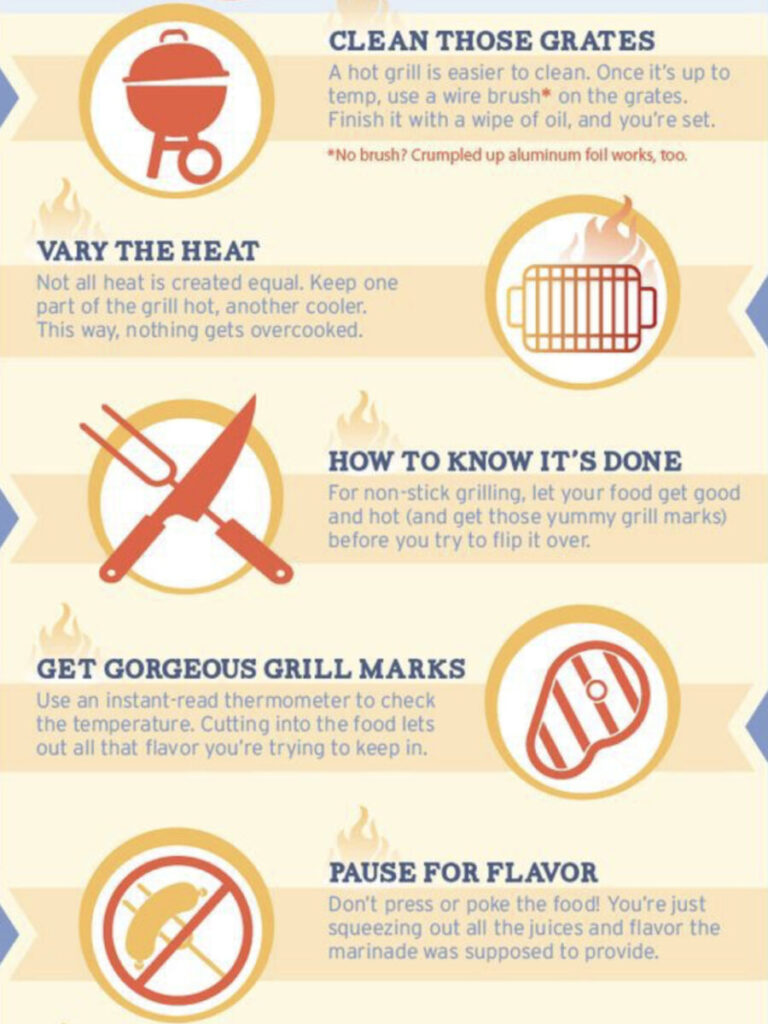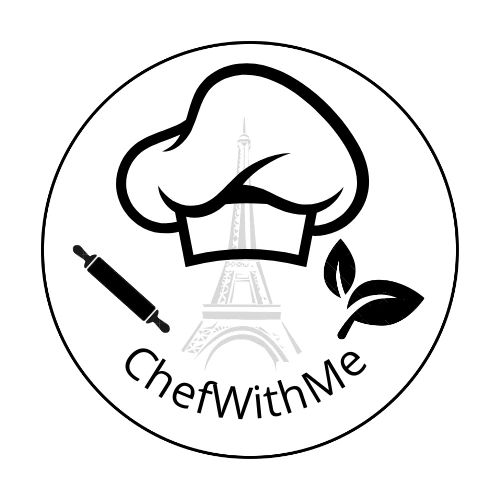Barbecue vs Grill – Elevate your grilling game beyond the basics. Achieve juicy, perfectly cooked chicken, tender steaks with beautiful grill marks, and flawlessly cooked fish. Discover our expert tips for maximizing your grill’s potential. Don’t settle for less than the best results. Keep reading for our top tips on mastering the art of great grilling.
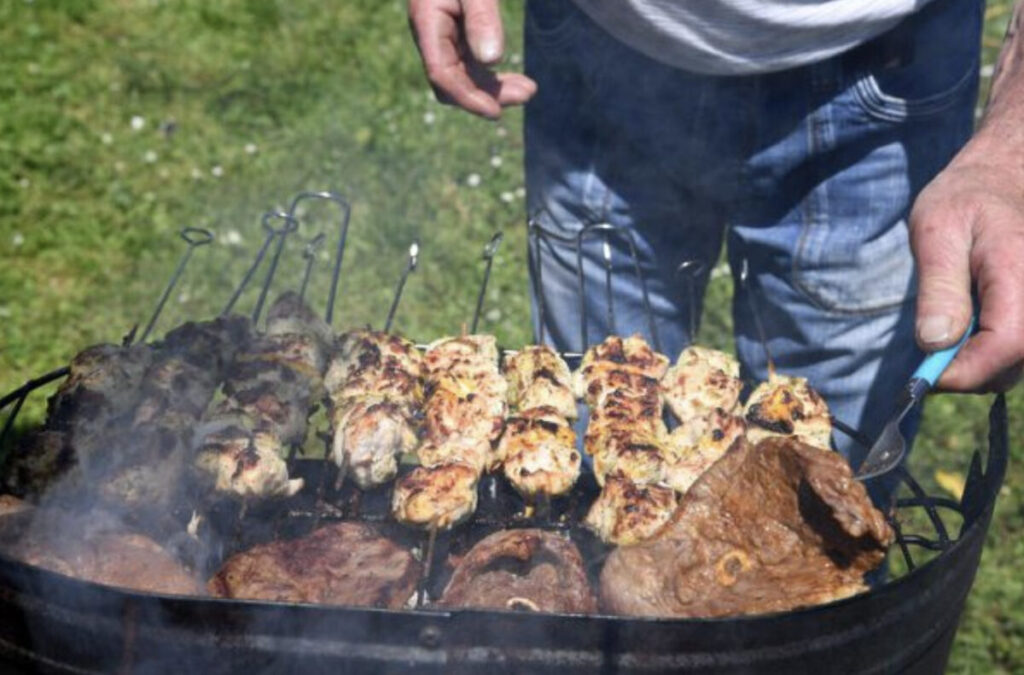
Grilling with Direct Vs. Indirect Heat: Understanding the Difference
Mastering direct and indirect heat is essential for achieving optimal grilling results. Each method offers distinct outcomes based on temperature and cooking time.
Direct heat grilling involves placing food directly over high heat without the grill lid. This method is ideal for quick-cooking items like thin cuts of meat, fillets, kabobs, and vegetables.
Indirect heat, on the other hand, is used for larger pieces of meat such as roasts, thick steaks, and whole fish. The food is cooked away from the direct heat at around 350 degrees F (175 degrees C). With the lid closed, cooking times are slightly longer. On a gas grill, this entails igniting the outer burners and placing the meat over the unlit center burner. For charcoal grills, the coals are pushed to the sides, leaving an open space in the middle for cooking.
Certain recipes may call for a combination of high and low cooking temperatures. For instance, grilled chicken can begin over high heat to achieve grill marks or crispy skin and then transition to lower heat to cook the interior without excessive charring.
Mastering the art of grilling with direct and indirect heat opens up a world of possibilities for creating delicious and perfectly cooked meals.
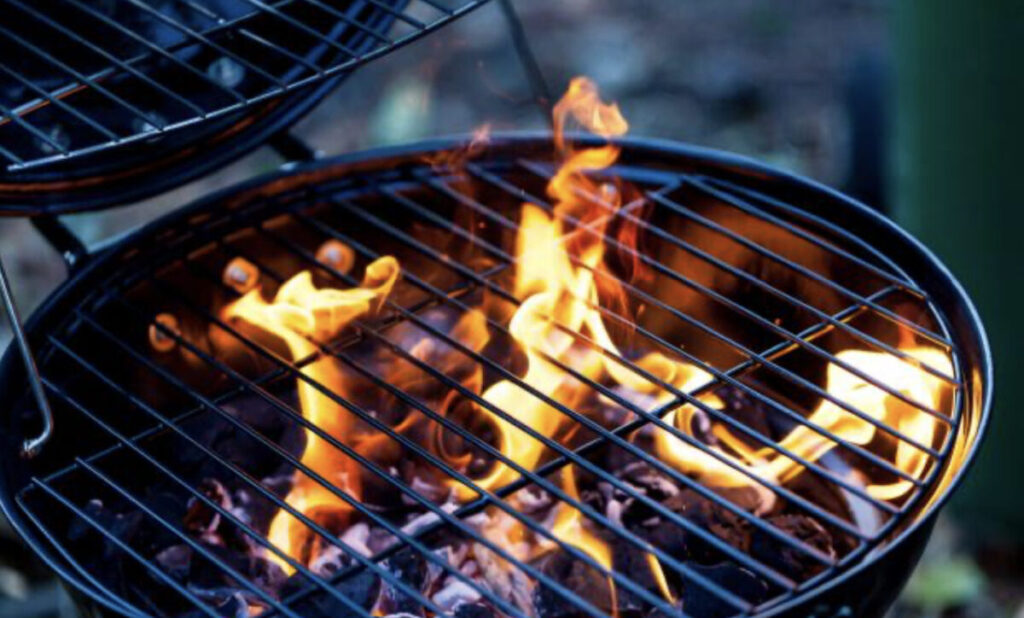
Grilling vs. Barbecuing
Grilling involves cooking food over direct or indirect heat at higher temperatures for shorter durations, resulting in fast and hot cooking.
Barbecuing, on the other hand, utilizes indirect heat at very low temperatures over extended periods, characterized by a slow and low cooking method.
The gas grilling vs. charcoal grilling debate is a hot topic among grilling enthusiasts. Let’s delve into the factors fueling this discussion.
Preheating the grill is crucial, much like preheating an oven before baking. If your grill has a built-in thermometer, wait for it to reach the desired temperature with the lid closed. Alternatively, you can use the caveman method: Hold your hand about 6 inches above the heat source, near where the food will cook, and count the seconds you can tolerate the heat.
High Heat: 3 seconds or 500°F (260°C) Medium High Heat: 5 seconds or 400°F (205°C) Medium Heat: 7 seconds or 350°F (175°C) Medium Low Heat: 10 seconds or 325°F (165°C) Low Heat: 12 seconds or 300°F (150°C)
Mastering the art of preheating ensures optimal cooking conditions for your grilling endeavors.
Achieving the Perfect Grill: Timing and Doneness
Timing is crucial in grilling, as it can be the difference between a succulent, tender cut and a dry, tough result. Even seemingly identical cuts can vary in cooking time due to factors like thickness, texture, age, and temperature. To be safe, start checking for doneness earlier than the suggested time in the recipe. Remember, individual results may vary.
For consistent results, use an instant-read meat thermometer to check the internal temperature. Insert it into the thickest part of the meat, avoiding the bone. If a thermometer is unavailable, you can rely on a basic method: Slice the meat and observe the color of the juices. Red juices indicate rare, pink for medium rare, and clear for well done.
Once you remove the meat from the grill, allow it to rest on a platter for approximately 10 minutes. This rest period allows the meat to reabsorb its juices, enhancing flavor and tenderness.
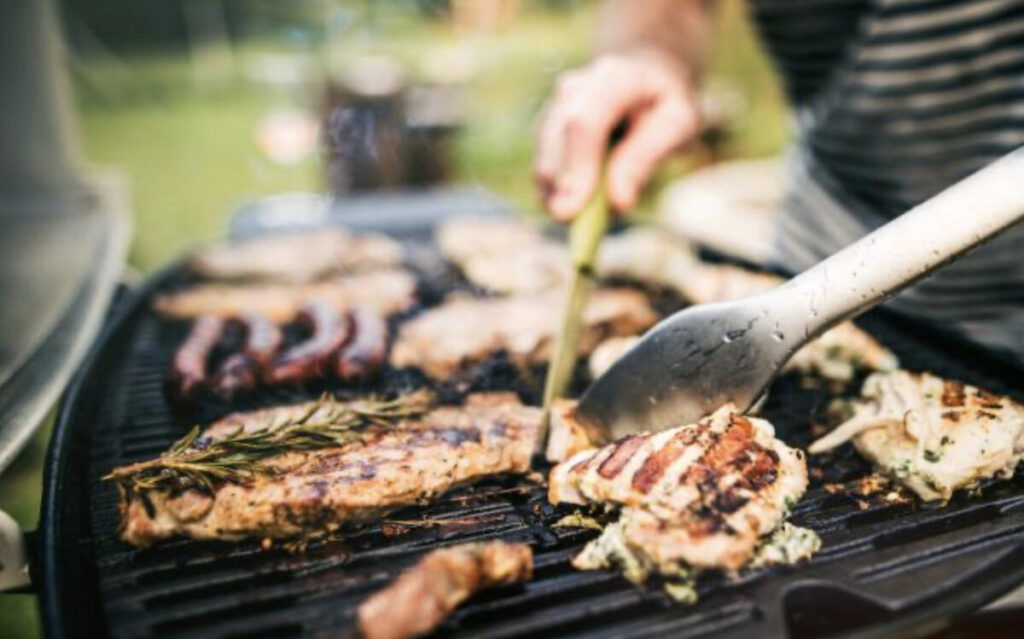
Food Handling and Safety Tips for Grilling
To ensure safe and enjoyable grilling experiences, follow these guidelines:
- Prepare all ingredients before you start grilling. A hot grill cooks quickly, so being prepared reduces stress during the process.
- Prevent cross-contamination by keeping raw meat and fish separate from other foods. Use separate cutting boards for raw and cooked meats, or sanitize mixed-use cutting boards thoroughly. Wash with hot, soapy water, spray with a 5 percent chlorine bleach solution, and allow them to air dry. Plastic cutting boards can be sanitized in the dishwasher.
- Avoid carving cooked meat on the same board used for raw meat to prevent the risk of bacterial contamination. Refer to our Top Tips for Safe Summer Grilling for more information.
- Trim the fatty edges of steaks and chops to prevent curling during grilling. Make incisions through the fat at 2- to 3-inch intervals, cutting just to the meat.
- Most basting sauces can be brushed onto the food at any time during grilling. However, sugar-based sauces, including many commercial barbecue sauces, tend to burn if applied too early. Save these sauces for the last few minutes of cooking.
- If using marinades as basting sauce at the table, ensure they are boiled for 3 minutes to eliminate any potential bacterial contamination.
- Opt for long-handled tongs or spatulas when turning the meat. This helps maintain its moisture and tenderness, as piercing the meat can release juices into the fire.
By following these tips, you’ll have a safe and successful grilling experience. Enjoy your deliciously grilled meals!
Easy Tips for Grilling in bonus
